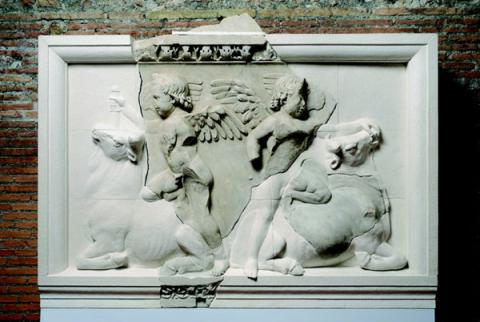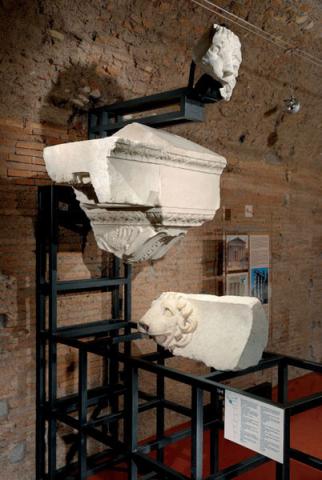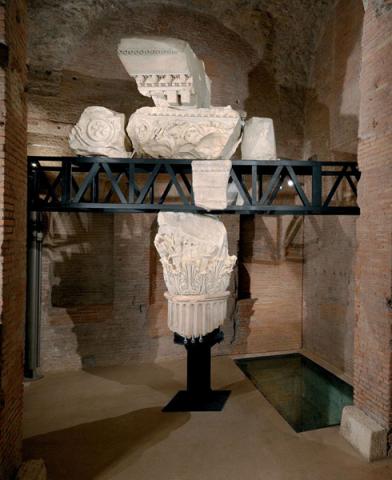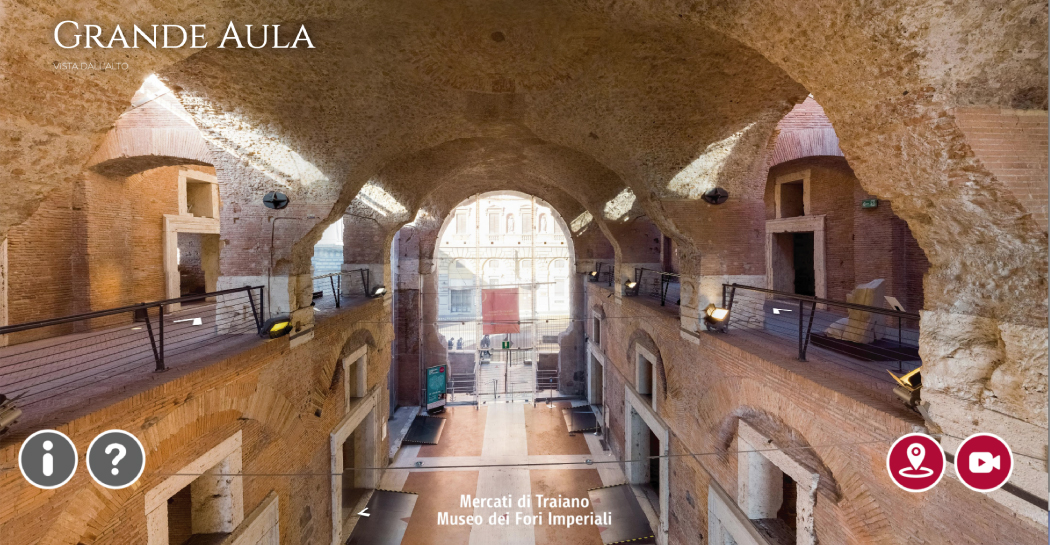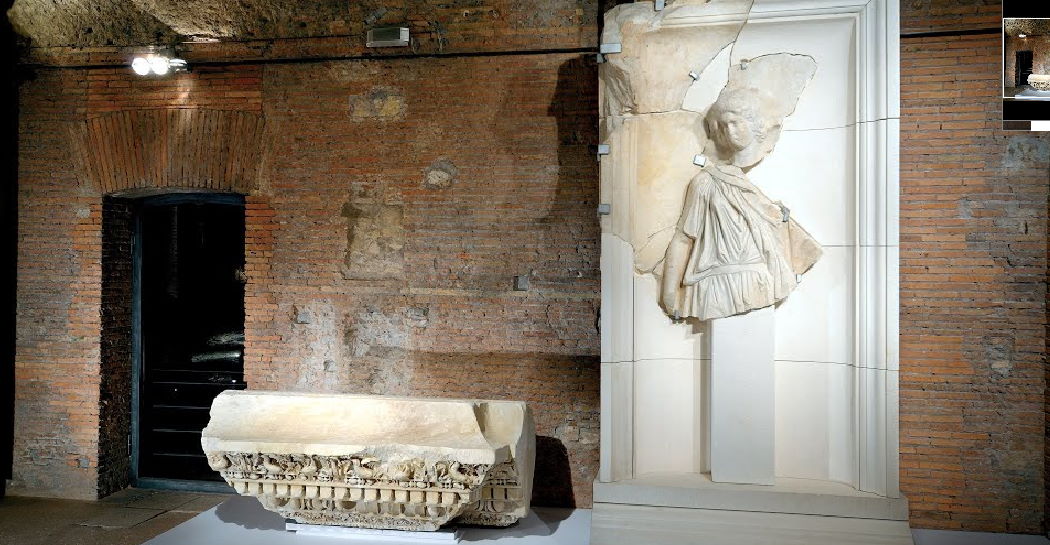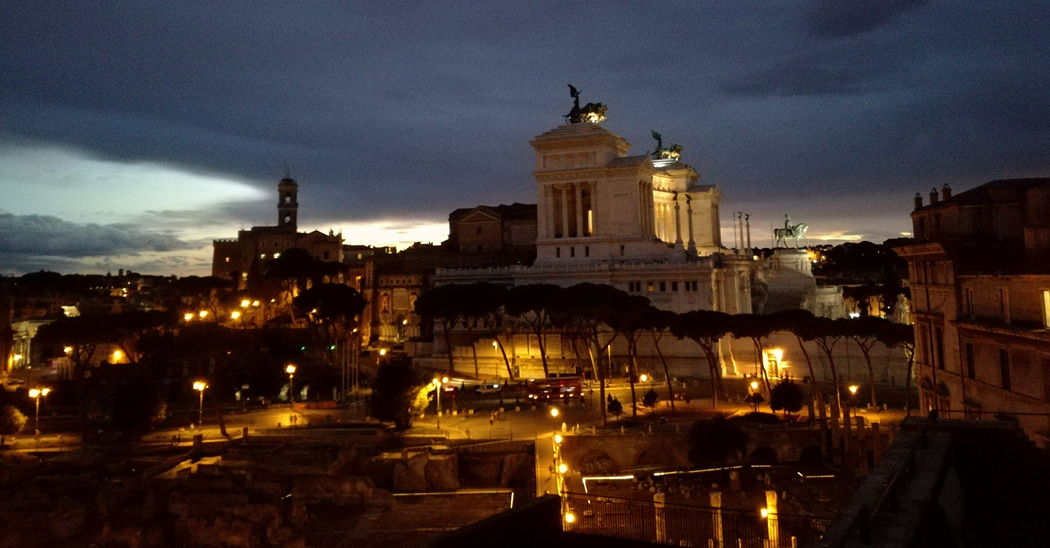The Temple of Peace
The Temple of Peace, which celebrated Emperor Vespasian quelling of the Jewish revolt (71 AD), was inaugurated in 75 AD. It housed the most precious trophies accumulated with the conquest of Jerusalem including the seven-arm candelabrum and silver trumpets taken from the city’s temple, which were also flamboyantly carved onto Titus’s Victory Arch on the Via Sacra.
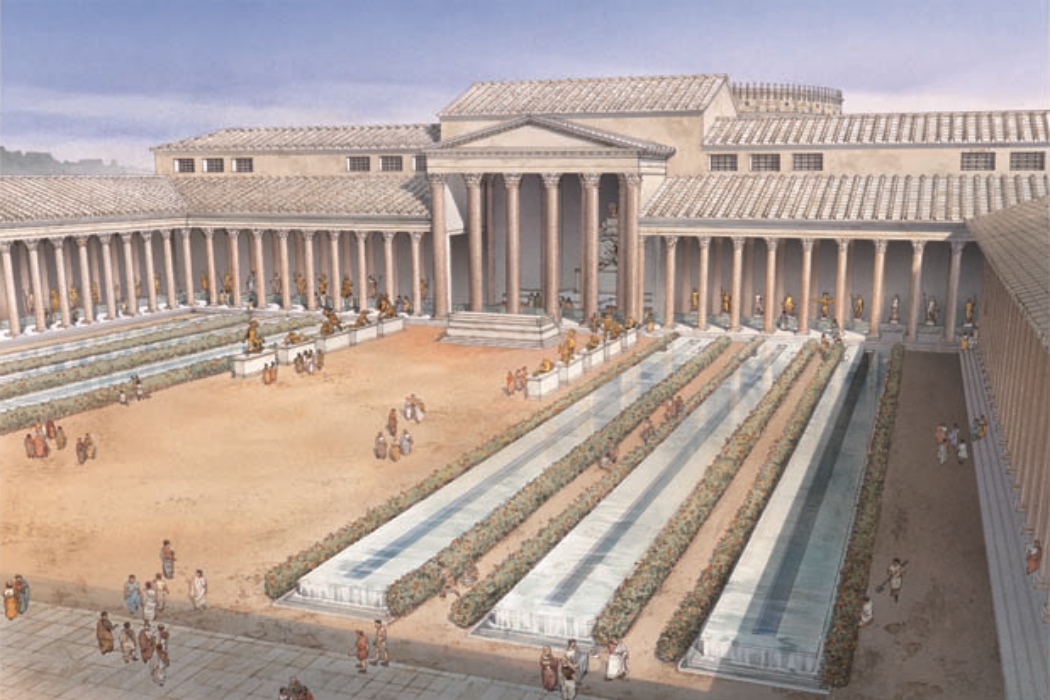
The name “Templum Pacis” (as known by ancient sources) reflects differences in the layout of the complex as compared to other imperial forums and stresses its sacred character.
The monumental complex was placed on the Macellum, the Market of the Republican era, which was destroyed in a fire during Nero’s reign (64 AD). It was perhaps influenced by the orientation and the condition of the space once occupied by the market.
The structures which remain are in the main part from reconstruction works carried out by Septimus Severus that followed a serious fire in 192 AD. The architectural layout of the temple was reconstructed through graphic documentation in Forma Urbis - a plan of Mable structures in Rome drawn on a scale of 1:246 at the beginning of the 3rd century AD, and recent archaeological studies conducted by the Roman Archaeological Heritage Authority.
The hall was rectangular and had an apse, that stood behind an altar and a hex style pronao, which was aligned along the axis of the porticos and divided in two rows of columns. These columns were larger than those making up the porticos and recently recovered fragments of drums of smooth pink Aswan granite 1.80 in diameter are thought to have once belonged to them.
In the absis (apse) a divine statue was placed on a podium. Its iconographic form represented a female figure sitting with a branch in her right hand while her left hand lay on her lap. The image of the statue was reproduced on commemorative coins minted in 75-76 AD. Two blocks of travertine that were to the statue’s sides, which had the purpose of sustaining vertical elements in the structure, are believed to be remains from the Temple of Jerusalem and thus constituted trophies.
In the Severan era, the room was paved with a large opus sectile form. The floor had a sequence of rotae (circular shapes) in Turkish pavonazzetto marble, granite and porphyry that were carved into squares of yellow Numidian marble within a pavonazzetto boarder. For some scholars, the room is considered a library with theories being based on comparisons made with the plans and architectural layout of the so-called Hadrian Library in Athens.
Tempio della Pace, Sculture e Arredi


























